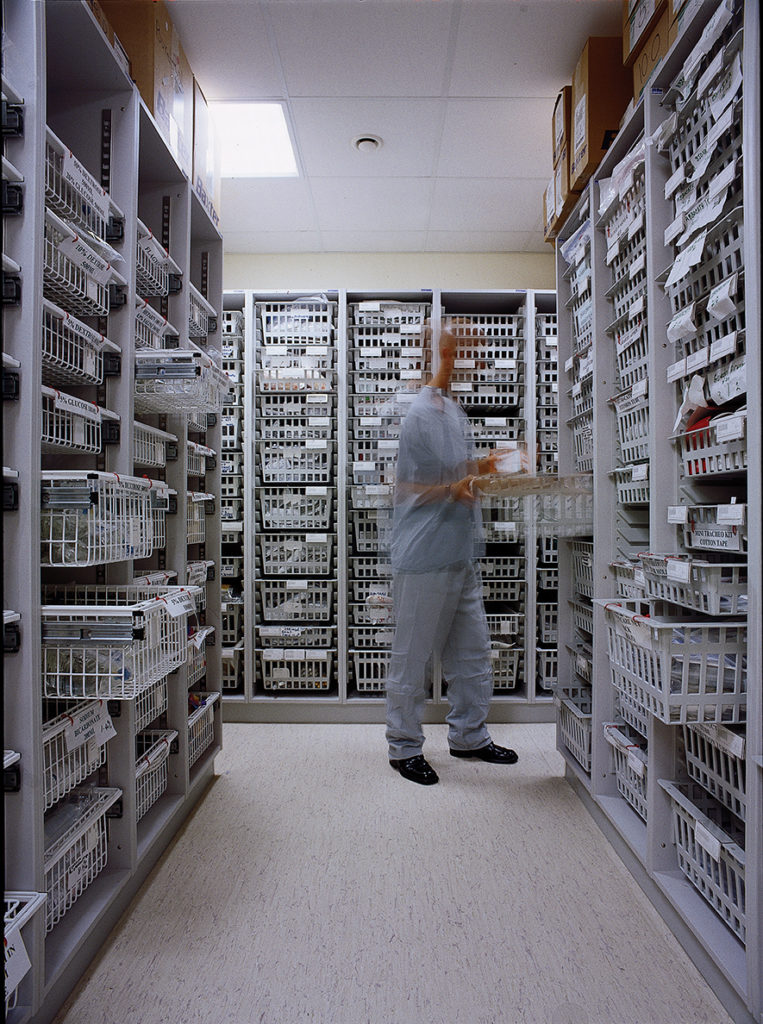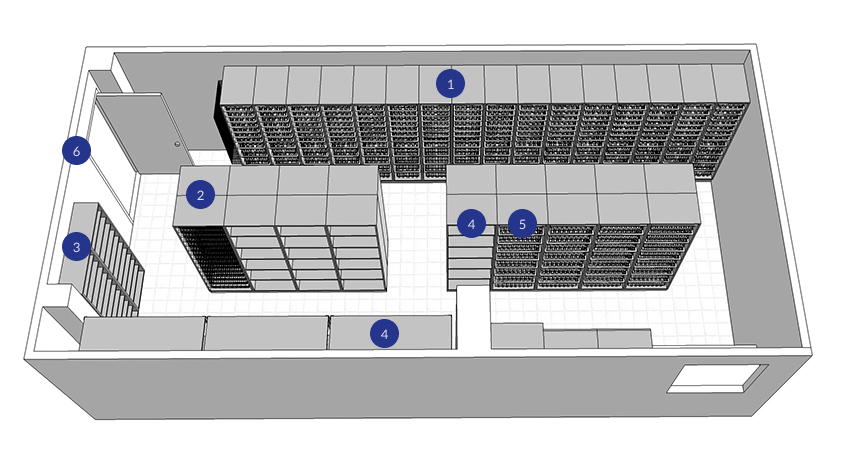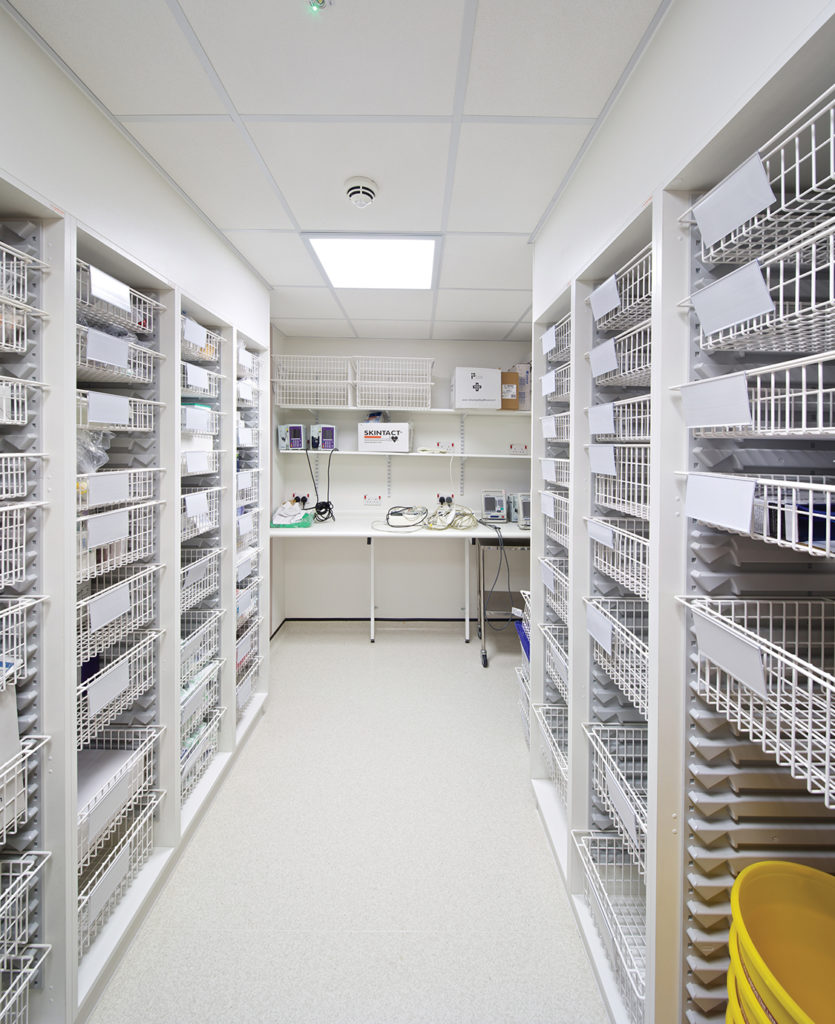Considerable savings can be made when stock is organised, and correctly rotated and Systemed components are designed to help make the task easier. A recent audit of stock in a major hospital theatre store found some items over five years past the use by date! Following some simple steps and principles can make all the difference.


1: Assortment of tall open fronted cabinets for standard stock, T60 and T40 style (CE02, CE02, CE03, CE04, CE09)
2: Prosthesis storage cabinets, T60 and T40 (CE08)
3: Sutures cabinets, T60 and T30 (CE04, CE10)
4: Plain shelf units (T60 CE04, T10) and longspan shelving for Bulky items and fluid boxes
5: Cabinets for decanted fluids (CE05)
6: Allow for spare capacity for holiday periods (additional stock) and wheeled equipment when not needed

Theatre store showing Tall T60 style CE09 style cabinets with wire baskets on support wall system, worktop on cantilever legs and wall mounted shelving. Cabinets boxed to ceiling to help prevent items being stored on top of tall cabinets and creating areas that are difficult to keep clean.
BIM DRAWING MODELS;- THEATRE STORE FAMILIES
Download Revit fileshttps://stirlingmedical.co.uk/wp-content/uploads/2021/10/THE003.zip


